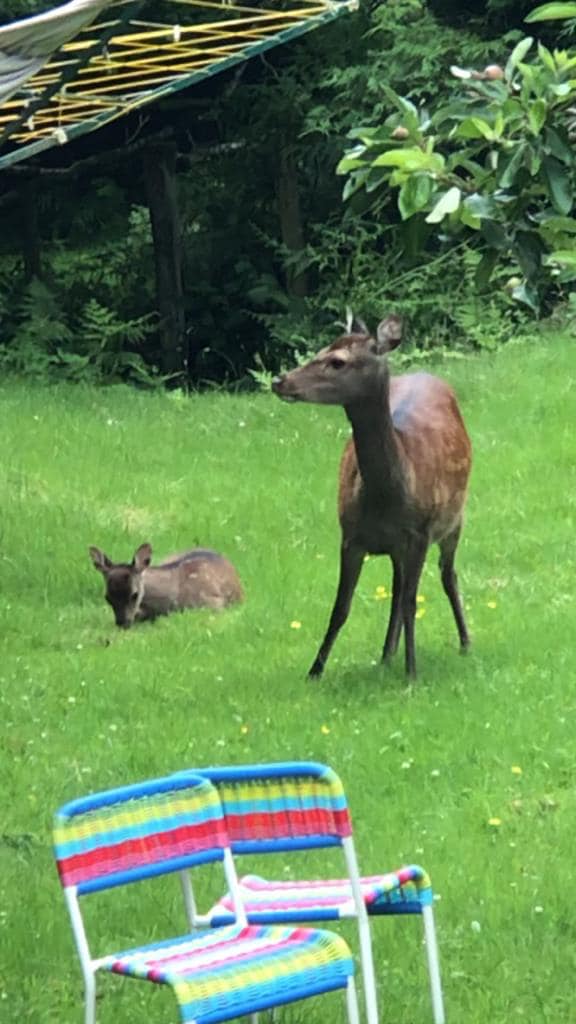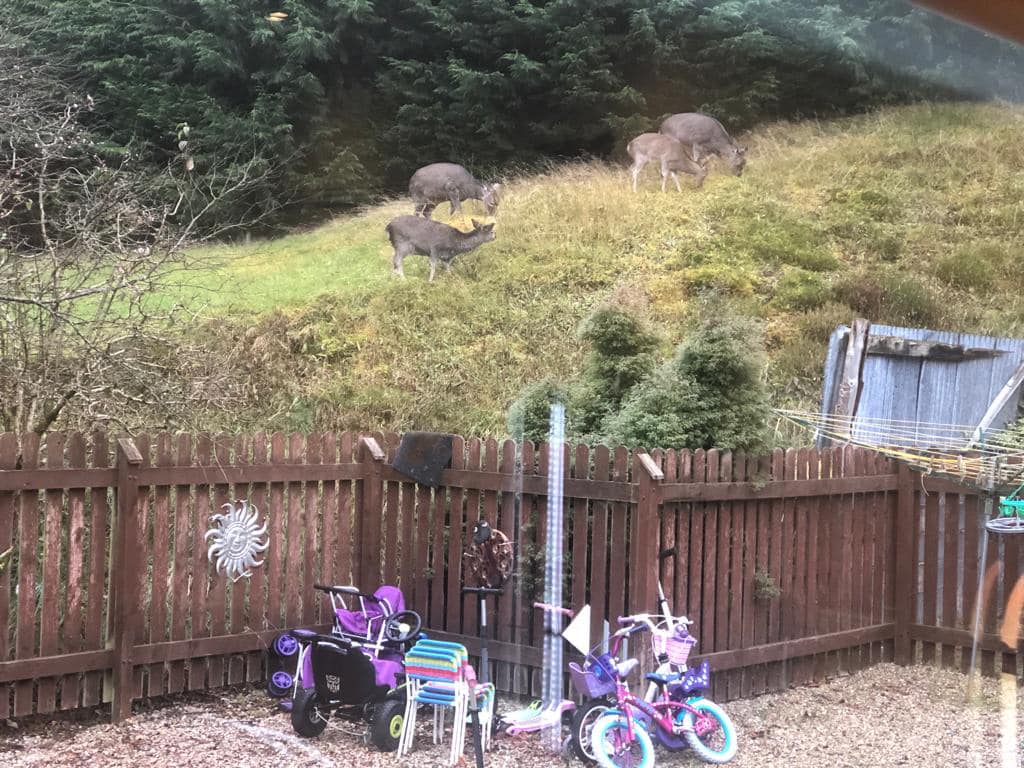Deer in the Garden
Unless you actually see deer in your garden, the only evidence may be damage to vegetation. Male deer can cause ‘fraying’ to young trees where bark has been rubbed from the main stem and left hanging in tatters. ‘Thrashing’ damage is caused by males whipping woody plants and low branches with their antlers, while ‘browsing’ damage to shoots and tips is caused by feeding.
Plants damaged by deer can be distinguished from rabbit damage by the ragged edge left at the tip. This is caused by the lack of incisors in the deer’s upper jaw. Rabbits have upper incisors and so make a clean cut, like that of secateurs.

The only real defence against deer is a properly constructed fence, which needs to be properly tensioned.
The base should be comprehensively dug or turfed in if it is not to be breached – deer can be quick to exploit the smallest gap.
Lightweight plastic meshes should be avoided as they are not robust enough and the deer can end up tangled in them.
Sirens, flashing lights and streamers may work for a short time, but deer soon adapt and ignore them.
PROTECTING TREES AND PLANTS
Protective plastic tubes can be placed around stems to protect them, but these are only of benefit to broadleaved trees. The tubes must be at least 1.6m tall to deter fallow, or 1.2m tall to deter roe or muntjac and rigidly staked to the ground to prevent deer knocking them over.
Alternatively, netting guards can be used for conifers and shrubs but they must also be of similar heights and staked to the ground.
If you want to avoid plastic you can surround the growing plants with brash (cut branches and other foliage) which keeps the deer away while the plants grow through it, or creating a ‘dead hedge’ of cut material.
THE ECO-FRIENDLY APPROACH
A good way to maintain a healthy, diverse garden able to cope with occasional deer visits is to provide natural food alternatives to your prize roses. This can be achieved simply by allowing brambles, rosebay willowherb, rowan (mountain ash), dandelion, campion, hoary cinquefoil, sweet lupin, redleg, ribwort and yarrow to grow in the garden.
This also has the benefit of attracting beneficial insects and birds. A mixture of effective plant protection and eco-friendly gardening should protect your garden from attack by deer and welcome other wildlife.
ALTERNATIVE PLANTS
Deer have preferences for different plants so planting less desirable plants may help as these are thought to be less susceptible to damage
VULNERABLE PLANTS DEER-RESISTANT PLANTS
| BLUEBELL | CAMELLIA |
| CALLUNA | CISTUS |
| CLEMATIS | CROCUS (SOME SPECIES) |
| CROCUS (SOME SPECIES) | FUCHSIA |
| FUCHSIA (HYBRID) | HELLEBORE |
| GERANIUM | HOSTA |
| HOLLY | HYDRANGEA |
| HONEYSUCKLE | IRIS |
| LUPIN | LAVENDER |
| PANSY | POPPY |
| PINES | PRIMULA |
| ROSE | RHODODENDRON |
| ROWAN | SEDUM |
| SWEET WILLIAM |
This is a list of plants known to avoid damage if alternative food is available:
AGAPANTHUS
ALDER
AQUILEGIA
AZALEA (DECIDUOUS)
BERBERIS SPP.
BIRCH
BOX
BUDDLEIA DAVIDII
CHAENOMELES
CHOISYA TERNATA
CHRYSANTHEMUM MAXIMUM
CISTUS
CLEMATIS SPP.
CORNUS SANGUINA
COTINUS COGGYGRIA
DAPHNE SPP.
DELPHINIUM
FORSYTHIA
FOXGLOVE
GAULTHERIA SHALLON
GOOSEBERRY
HELLEBORE
HONEYSUCKLE
HIPPOPHAE RHAMNOIDES
HYDRANGEA
JASMINE
JUNIPER
KERRIA JAPONICA
KNIPHOFIA
LONICERA NITIDA
LAVENDER
LUPIN
MAGNOLIA
MAHONIA SPP.
NARCISSUS
PAMPAS GRASS
PHILADELPHUS
PHORMIUM TENAX
PINE
POTENTILLA FRUTICOSA
RIBES SPP.
ROBINIA PSEUDOACACIA
ROMNEYA COULTERI
ROSA RUGOSA
SHALLON
SNOWBERRY
SPIRAEA JAPONICA
SWEETBAY
VIBURNUM (DECIDUOUS)
VINCA SPP.
WEIGELA
YUCCA

